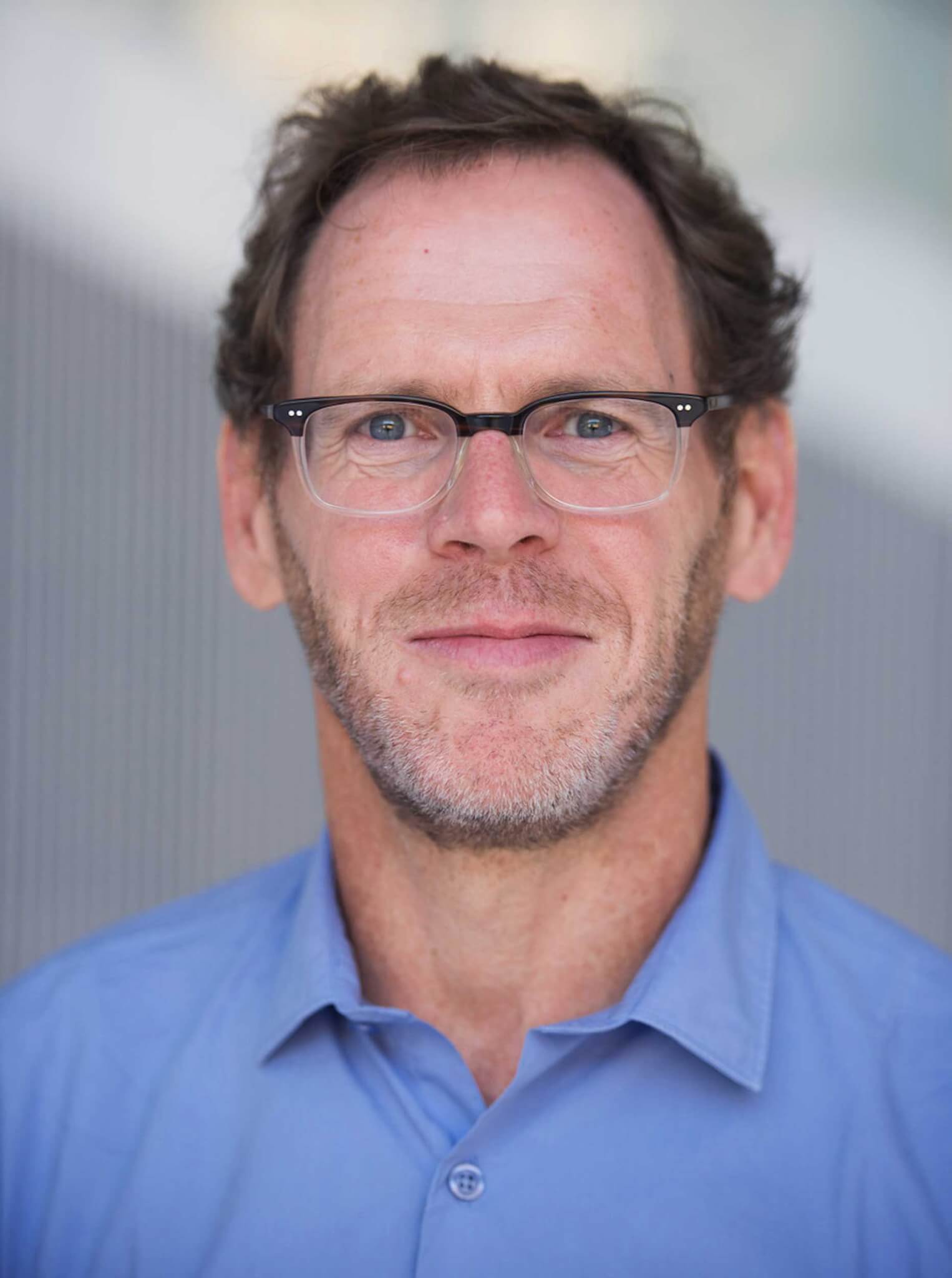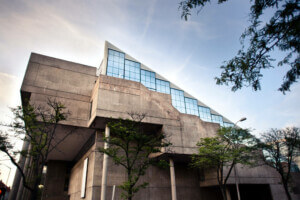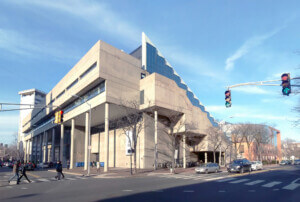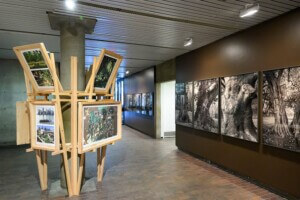The Loeb Fellowship at The Harvard Graduate School of Design (Harvard GSD) has hosted hundreds of midcareer professionals in disciplines related to the built environment since its founding in the late 1960s by John L. Loeb. In addition to announcing the ten 2025 Fellows, Harvard GSD also shared that 2024 marks the last year for John Peterson, curator of the Loeb Fellowship, who has held the role since 2015.
The 2025 Loeb Fellows are:
Mariana Alegre
Founder and executive director of Sistema Urbano
Lima, Peru
Pierre-Emmanuel Becherand
Head of design, culture, and urban planning for the Grand Paris Express
Paris, France
Leanne Brady
Health-systems activist and filmmaker
Cape Town, South Africa
Shana M. griffin
Feminist activist, sociologist, abolitionist, artist, and geographer
Founder of PUNCTUATE and cofounder of Jane Place Neighborhood Sustainability Initiative
New Orleans
Nikishka Iyengar
Social entrepreneur, organizer, and writer
CEO of The Guild
Atlanta
Tawkiyah Jordan
Urban planner
New York City
Tosin Oshinowo
Architect, designer, and curator
Founder and principal of Oshinowo Studio
Lagos, Nigeria
Sahar Qawasmi
Architect, restorer, cultural organizer, and forager
Cofounder of Sakiya – Art | Science | Agriculture
Ramallah, Palestine
Matt Smith
Cofounder and director of Building Common Ground
Santa Fe, New Mexico
Tunde Wey
Social practice artist
Lagos, Nigeria/Detroit
This fall, these Fellows will complete a ten-month residency at Harvard GSD where they will join the school’s academic community. The Fellowship does not require a specific deliverable or output; rather, the two semesters allow time for Fellows to reflect on their career and consider how to broaden the impact of their work.
In 2025 the Loeb Fellowship will continue its collaboration with the ArtLab at Harvard University through the support of Shana M. griffin as its 2025 Loeb/ArtLab Fellow. Studio access and ArtLab resources will be available for griffin during her Fellowship.
“Every year, Loeb Fellows bring an incomparable breadth and diversity of experience to the GSD. They inspire us with their accomplishments, enrich conversation across our school, and challenge us to think critically about how designers can create a more just world,” said Sarah M. Whiting, dean and professor of architecture at Harvard GSD.
Notable architecture and design alumni include Joseph Zeal-Henry (2024), Andrew Freear (2018), Mark Lamster (2017), Alexandra Lange (2014), Cathleen McGuigan (1993), James Carpenter (1990), Phil Freelon (1990), Cynthia Davidson (1989), Charles Birnbaum (1998), Ann Beha (1988), Margaret McCurry (1987), and Kenneth Frampton (1973), among others. This network also includes AN contributor and architecture critic of The Philadelphia Inquirer Inga Saffron (2012) and recent Outdoor Spaces presenter Pamela Conrad (2023).
A Decade of Exchange
John Peterson, curator of the Loeb Fellowship is stepping down in December after assuming the role in July 2015. Educated as an architect, Peterson founded his own architecture practice and Public Architecture, a national nonprofit based in San Francisco. Peterson was a Loeb Fellow in 2006. A search is underway for his successor.
In this exclusive interview, AN spoke with Peterson about the Fellowship, the state of architectural discourse, and his next steps.

AN: You’ve led your own architecture practice, founded a nonprofit, and completed your own Loeb Fellowship in 2006. How did your prior roles prepare you to curate this program?
John Peterson (JP): Building an architecture practice and a nonprofit demands playing a number of different roles. I had to be able to set a vision and lead others toward that vision, take risks and manage outcomes, and understand the mechanics of running a business, managing staff, raising money, managing clients, etc. I now also know something about working in a large bureaucracy, the near absence of risk, and the challenges of getting things accomplished.Exposure to all of these roles and contexts has helped me identify the most appropriate candidates for the Fellowship, understand where they are in their careers, support them as they navigate Harvard and MIT, and help them envision the future of their work and impact.
AN: How has the Loeb Fellowship changed under your leadership? What shifts in priority or scope have there been, if any?
JP: My predecessor, Jim Stockard, handed me a successful program. My task certainly wasn’t to fix something that was broken. I deeply believe in the mission of the Fellowship and the opportunity it provides. So, the question was always: How do we make it better and how do we increase its relevance?
Alongside the staff, I’ve spent a lot of time improving the components of the Fellowship to better reflect the needs of Fellows in a changing world. For example, we modernized how the Fellows present themselves to the world through a much more accessible video format. We increased emphasis on the value of the cohort and how Fellows interact with each other. We heightened their interaction with students and faculty at the GSD. We invested in a much more global reach, and the Fellowship now has a much bigger international footprint.
It’s also notable that I’m the first designer to have this role. I have thus tried to break down the assumption that there is a divide between social issues and cultural ones like aesthetics in the design fields.
Perhaps most importantly, the Fellowship’s understanding of and commitment to the values of diversity and inclusion have deepened over time. Who we select as Fellows both define and express our values and the impact we hope to have.
AN: How is diversity advanced within the Loeb Fellowship?
JP: There is certainly an expectation that the Fellowship has diverse representation across race, ethnicity, gender, sexual orientation, geography, and socioeconomic background. But my read on your question also relates to diversity in discipline. This, in many ways, is the particular value of the Loeb Fellowship. Who we define as those who influence the shaping of the built and natural environment is the most interesting and provocative thing we do. We, of course, have representation from the design disciplines in the built environment but we also have Fellows with backgrounds in law, journalism, fine art, politics, public health, and real estate development. A few years back, we even had a retail business owner. Bringing these voices to Harvard GSD and around the dinner table is our most valuable service while cohorts are in residence.
AN: What feedback mechanisms let you know if the fellowship is successful or not? Is there any anecdote you’d like to share about how the fellowship has changed the trajectories of its fellows?
JP: We look for intellectual growth, clarity of purpose, and empowerment. That means something different for every single Fellow, and success manifests in a wide range of mechanisms and outcomes. Many times, success shows up clearly in real time during their Fellowship year; but often the positive results of Fellows’ experiences in residence don’t manifest themselves for one, two, or even five years after.
The retailer I mentioned earlier, Eric Williams (2018), told me at the beginning of his Fellowship that he was here to gain a deeper understanding of the work he had been doing for the previous two decades. He was a voracious learner and connector, and his experience gave him insight and language that transcended a simple read of running a retail business. He went back to his work on the South Side of Chicago and soon after was advising the local health department on using small business development to improve health outcomes.
Jim Gray (1997) was running his family’s large construction company when he was a Fellow back in the 1980s. He told me while he was here, he had two powerful revelations. He would go public as a gay man, and he wanted to commit his career to public service. After the Fellowship, he returned to his hometown of Lexington, Kentucky, and became the first openly gay mayor in the state’s history. I’m so familiar with transformative stories like these that they start to feel commonplace.
AN: How do you see the current state of public discourse about the built and natural environments? What is troubling or inspiring, in your view?
When I graduated from architecture school in 1990, there was an active disinterest in identifying architecture as a political and social act. That, thankfully, is rapidly changing. Students and young practitioners have high expectations that their work will have sociopolitical outcomes. Nevertheless, the mainstream design professions continue to struggle with embracing collective authorship and a clear understanding of the social consequences of their work. We continue to identify the designer as a heroic singular visionary who fends off the travails of the world to bring their singular, creative vision to fruition. My decades of considering this question have brought me to two assumptions and a statement: The design of the built environment has a significant impact on the quality of our lives, communities, and planet. Architects and designers have little understanding of the social consequences of our work, let alone how to use it to achieve social outcomes. Those, I think, are easy assumptions to stand behind, along with the statement: We should.
AN: How should designers understand their work within the larger mechanisms that produce, maintain, and degrade the built and natural environments? Given your experience, how do you understand architecture and design as situated within wider cultural, economic, and political contexts?
JP: For one, I understand the design profession as far too separated from the people and networks that lead the implementation of those larger mechanisms. And, at worst, we are the unenlightened service providers to a system whose results we often are ignorant of and apathetic to. We have built a professional culture that values hermetic conversation with itself and its clients of privilege. While this has elevated the profession’s position as a high-culture commodity, we’ve paid a price for our inability to influence critical but messy issues like climate justice and social outcomes. Hence, large international mission-based institutions turn to architects to design their headquarters but don’t turn to architects to help them understand how the built environment can be used as a tool to further their mission.
AN: What will you do next?
JP: I honestly don’t know. There are several directions that interest me. This will be the fourth chapter of my career. I’ve built and run an architecture firm, a nonprofit organization, and I’m now finishing chapter three as an educator and a university administrator. I’ve gone from low-resourced environments with high risk and reward to a highly resourced environment with relative low risk and a focus on incremental improvements. Next, I’m hoping for a highly resourced environment with elevated risk and reward. At least, that sounds good to me right now.











